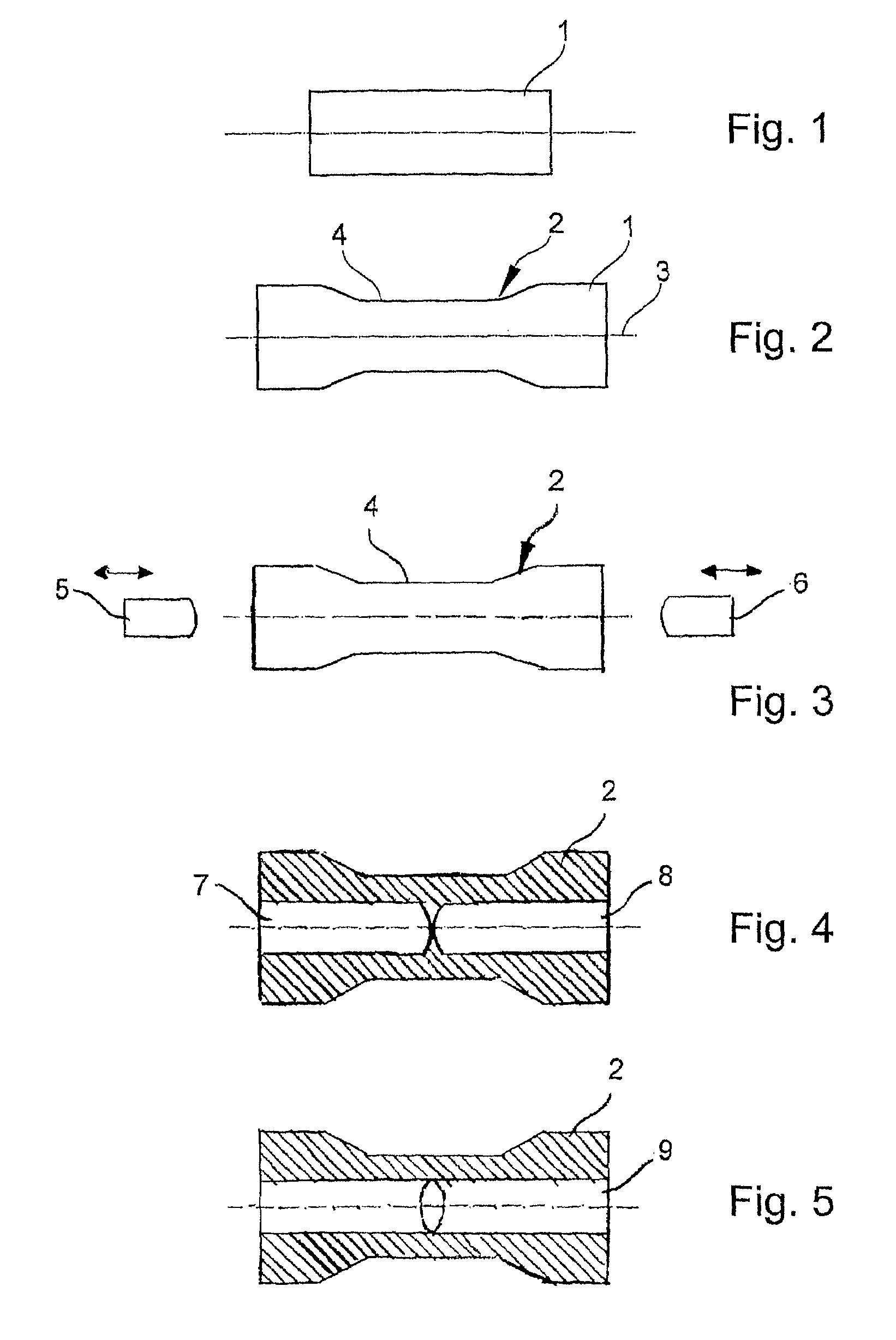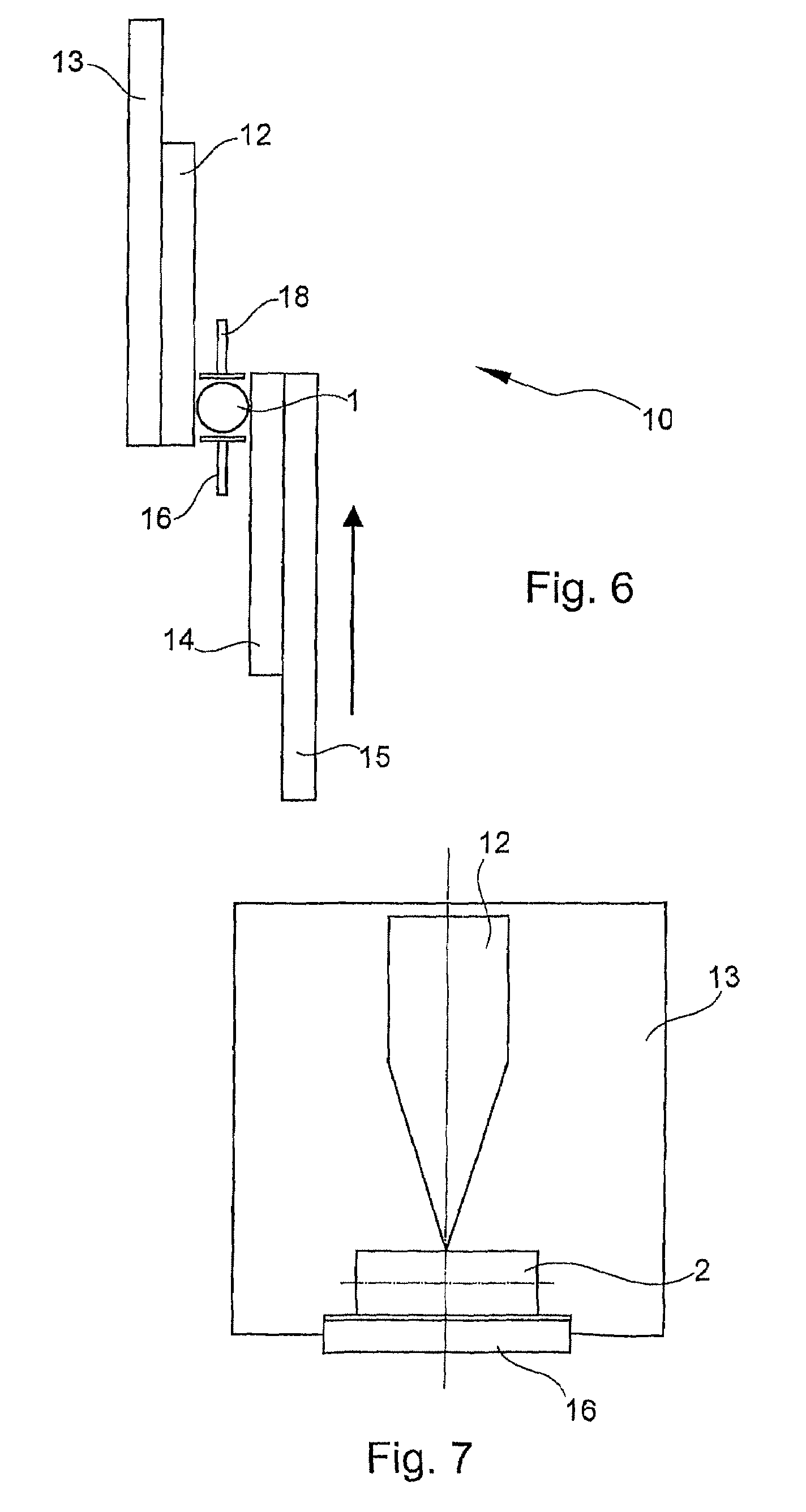Method for the production of a rotationally symmetrical part, and part produced according to said method
a rotational symmetry and hollow part technology, applied in the direction of screw threads, mechanical instruments, other domestic objects, etc., can solve the problems of high production cost of transmission shafts, inability to produce bores or through bores or hollow parts, and high weight, so as to reduce weight, save materials for parts and production costs, and maintain strength
- Summary
- Abstract
- Description
- Claims
- Application Information
AI Technical Summary
Benefits of technology
Problems solved by technology
Method used
Image
Examples
Embodiment Construction
[0035]In FIG. 1, a bar 1 of solid material is shown, which is heated to the forging temperature. In FIG. 2, it is schematically shown how the material is formed into a transversally spline-rolled shaft of different diameters. During the rolling process, the bar 1 is moved with high forces over the tools 12, 14 so that the material is hardened in the peripheral zone 4 and the core 3 becomes brittle because of the oszillating movement and is torn open. The tools 12, 14 form the peripheral part of the shaft 2 similar to its end shape. In this way collars, thinnings, etc. can be formed. A typical wall thickness of such a shaft amounts to 5-10 mm.
[0036]FIG. 3 shows how, from the two axial end surfaces of the shaft 2, two rotatable, moveable mandrels 5, 6 are forcibly introduced in an axial direction into the shaft 2 along the center axis 3 weakened by the Mannesmann effect. The mandrels 5, 6 continue advancing to a point before they contact. In this way, the shaft material is pressed mor...
PUM
| Property | Measurement | Unit |
|---|---|---|
| diameter | aaaaa | aaaaa |
| diameter | aaaaa | aaaaa |
| diameter | aaaaa | aaaaa |
Abstract
Description
Claims
Application Information
 Login to View More
Login to View More - R&D
- Intellectual Property
- Life Sciences
- Materials
- Tech Scout
- Unparalleled Data Quality
- Higher Quality Content
- 60% Fewer Hallucinations
Browse by: Latest US Patents, China's latest patents, Technical Efficacy Thesaurus, Application Domain, Technology Topic, Popular Technical Reports.
© 2025 PatSnap. All rights reserved.Legal|Privacy policy|Modern Slavery Act Transparency Statement|Sitemap|About US| Contact US: help@patsnap.com



